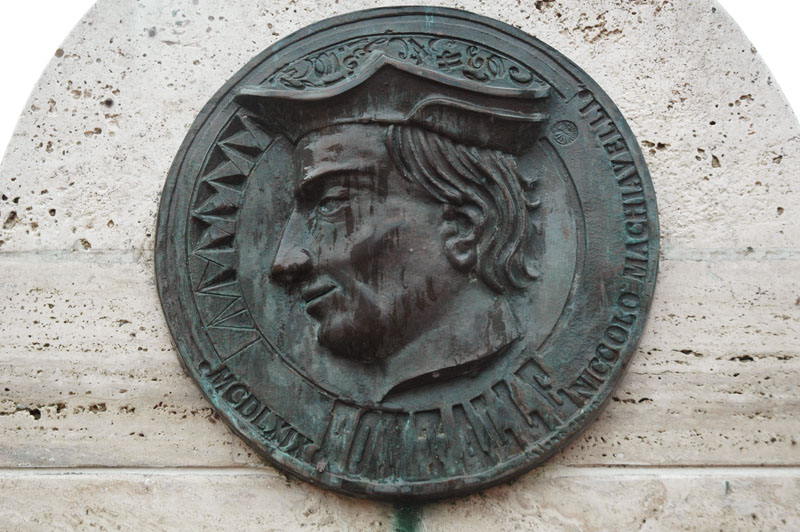|
Niccolò Machiavelli and Leonardo Da Vinci, the famed Florentines, collaborated on a singular civil/military
engineering enterprise to deprive the city of Pisa of
water, with the hope of subduing it. By the Spring of 1504, Pisa had been independent of Florentine rule for
nearly a decade.
At that time, Leonardo convinced the rulers of Florence,
located upstream of Pisa, to construct a canal to divert the waters of the
River Arno, thus depriving Pisans from the water that they had become accustomed to.
The scheme was difficult at best, but Leonardo had a reputation to uphold and was convinced that it could be done.
Machiavelli, who at the time was Vice-Chancellor
of the Florentine Republic, was put in charge of supervising the operation.
The diversion of the Arno was
promoted not only as a way to subdue the Pisans, but also to provide flood control to the city of Florence.1
While the canal was technically Leonardo's brainchild,
the actual task of construction, which started on August 20, 1504, was entrusted to a relatively obscure engineer named Colombino.
The builder made some changes to Leonardo's design, primarily to appease Machiavelli's urging for haste.
When things did not work according to plans, Machiavelli began to doubt the canal design.
To make matters worse, by the first week of October,
a violent storm struck, which caused the walls of the canal to collapse.
Thereafter, the project was speedily abandoned and
the Pisans came out to fill the ditch.
Thus ended Machiavelli and Leonardo's brief and ill-fated incursion into
hydraulic engineering.
| ||
|
